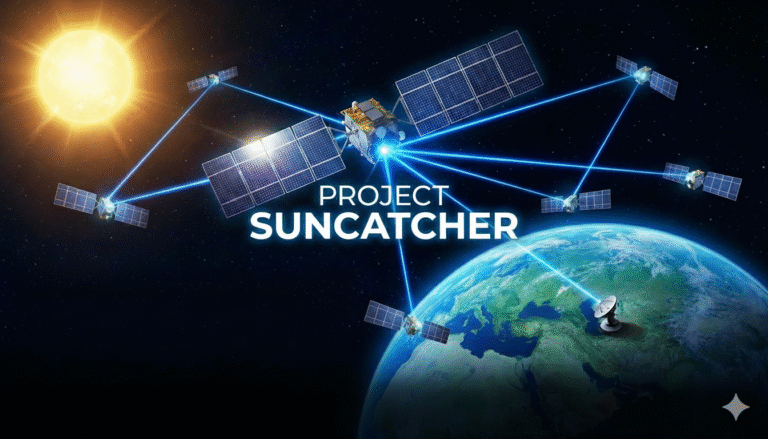What if the rustle of a plastic bag or the flutter of a leaf could become a secret window into human conversations? Thanks to a groundbreaking innovation from researchers at the Beijing Institute of Technology, we may be entering an era where sound is seen, not just heard. Their low-cost, passive visual microphone turns everyday objects—paper, leaves, plastic—into discreet, high-fidelity microphones using nothing but light.
This remarkable technology, built on advances in single-pixel imaging and optical sensing, promises to transform everything from disaster response to auditory health. Yet, its stealthy eavesdropping ability raises profound privacy questions too. Let’s dive into the science, real-world applications, and why this “light-based listening” could be both a game-changer and an ethical minefield.
How Does a Visual Microphone Work?
The core idea is elegantly simple: sound makes things vibrate—even if we can’t see the movement with the naked eye. When someone speaks, the sound waves ripple through nearby objects, causing minute changes in their surfaces. These vibrations are richest on lightweight, flexible materials (think paper cups, leaves, or thin plastics), which act as accidental “sound boards.”
The Optical Secret
- Light, Not Sound:
Instead of using conventional microphones, the Beijing team designed a system that shines ordinary light on the target object and measures the reflected light with a sensitive single-pixel detector (think of this as a digital “eye” that only needs to measure brightness, not take detailed pictures). - Decoding Vibration:
As speech or other sounds cause the object to vibrate, the reflected light subtly changes—by detecting these modulations, the system mathematically reconstructs the pattern of speech vibrations. - No Fancy Hardware:
Unlike earlier attempts that needed expensive high-speed cameras or precision lasers, this setup is passive, low-cost, and works in daylight with basic optical components.
In essence, any surface that can “wiggle” to sound waves becomes a remote microphone—even through a window, or without physical contact.
The Science Behind Light-Based Listening
Single-pixel imaging is a technique from physics and engineering that records a scene’s brightness changes rather than building a whole photograph. In this system:
- A beam of light is directed at the vibrating object.
- As the object shakes in response to sound, the reflected light flickers in a pattern unique to the sound.
- An ultra-sensitive sensor captures these subtle intensity changes.
- Signal processing algorithms then reconstruct the vibration’s “audio fingerprint”—which, with the right models, can be translated back into speech.
Key advantages:
- Noninvasive: No need to place a microphone or sensor on the source.
- Low-cost: No special lasers or high-speed video required.
- Passive: The device does not emit strong, detectable signals; it just “watches” the light.
Potential Applications: Where Could Visual Microphones Make an Impact?
1. Search & Rescue
In disaster zones, time is life. The ability to “hear” cries for help through debris or walls (by targeting vibrating surfaces with light) could radically improve search speed and save lives.
2. Non-Contact Medical Monitoring
Imagine monitoring a patient’s breathing or even subtle changes in voice, from a distance, using only a patch of paper or other surface in the room. No wires. No discomfort. Potential use cases abound in:
- Sleep apnea diagnosis
- Voice disorder screening
- Vital sign monitoring in infectious disease wards (reducing infection risk)
3. Security & Surveillance
On the surveillance side, the threat is double-edged. This technology can, in theory, convert any visible surface—like a napkin at a café, a window in a meeting room, or a plant on the desk—into a silent, invisible microphone, all from afar.
4. Acoustic Engineering & Smart Devices
Engineers could use visual microphones to “see” how structures and materials respond to sounds. Smart homes might one day use such technology for more accurate voice control—even filtering out background noise by focusing on surfaces nearest a speaker.
How Is This Different from Traditional Microphones or Laser Eavesdropping?
- Traditional Microphones need direct access and physical connection.
- Laser Microphones (used in some espionage) send a laser beam to “listen” to window vibrations but are expensive and can be detected.
- Visual Microphone (Passive Optical) does not require contact, can be done at a distance, uses safe, non-laser light, is hard to detect, and is remarkably low-cost.
Key Challenges and the Path Forward
Technical Limitations
- Distance and Angle: While promising, accuracy drops as the system moves farther from the vibrating surface or if the angle is off.
- Background Light: Too much ambient lighting or uneven surfaces can make detection harder.
- Distortion: Speech reconstructed from weak or complex vibrations can still be distorted—perfect “stealth listening” in all situations is not yet possible.
Ethical Concerns: The Surveillance Dilemma
The passive, stealthy nature of this optical microphone means it could be used for covert surveillance—without any physical breach, wiretap, or expensive tech. This raises tough questions:
- Consent: People don’t expect a random leaf or the coffee cup on the table could become a microphone.
- Regulation: There are no laws yet specifically governing optical, non-contact recording of speech.
- Security: Sensitive conversations, private homes, and workplaces could be at risk.
Policymakers and technologists must work together to ensure this innovation is harnessed ethically.
FAQs
Q: What’s the difference between this and traditional eavesdropping devices?
A: The visual microphone works without placing any device at the source—it “listens” by watching light bounce off surfaces that vibrate from sound.
Q: Can it work through glass or at a distance?
A: Yes, it can detect vibrations through clear surfaces like glass, and, with enough optical sensitivity, potentially across rooms or even from outside buildings.
Q: Will this make all conversations insecure?
A: Not entirely—complex environments, crowded spaces, and varied materials add significant obstacles. But it lowers the technical bar for remote, undetectable audio capture compared to previous methods.
What’s Next? The Future of “Light Listens” Tech
- Enhanced Resolution: Combining this with advanced AI and better sensors could make speech reconstruction easier and possible under more challenging conditions.
- Portable Devices: Imagine smartphones or drones using visual microphones for real-time capture of remote voices or medical data.
- Integration with AI: Smart algorithms could isolate individual voices, ignore background noise, or even perform speaker identification using only vibrations.
Balance Needed: As with all powerful technology, the challenge is to maximize the benefits—like life-saving rescues or better healthcare—while developing robust privacy safeguards.
Seeing Sound, Hearing Light
The Beijing Institute of Technology’s visual microphone leaps beyond the Hollywood spy fantasy—bringing us closer to a world where the line between light and sound, sight and hearing, is astonishingly thin. The same surface that barely rustles in the wind can now transmit words, songs, or cries for help, all decoded by a watchful beam of light.
But as we marvel, we must also tread with caution. The greatest innovations—those that let us see the invisible or hear the impossible—always come with new responsibilities. The era of light-listening microphones is dawning; how we use and regulate them will shape the boundaries of privacy, safety, and humanity itself.









+ There are no comments
Add yours